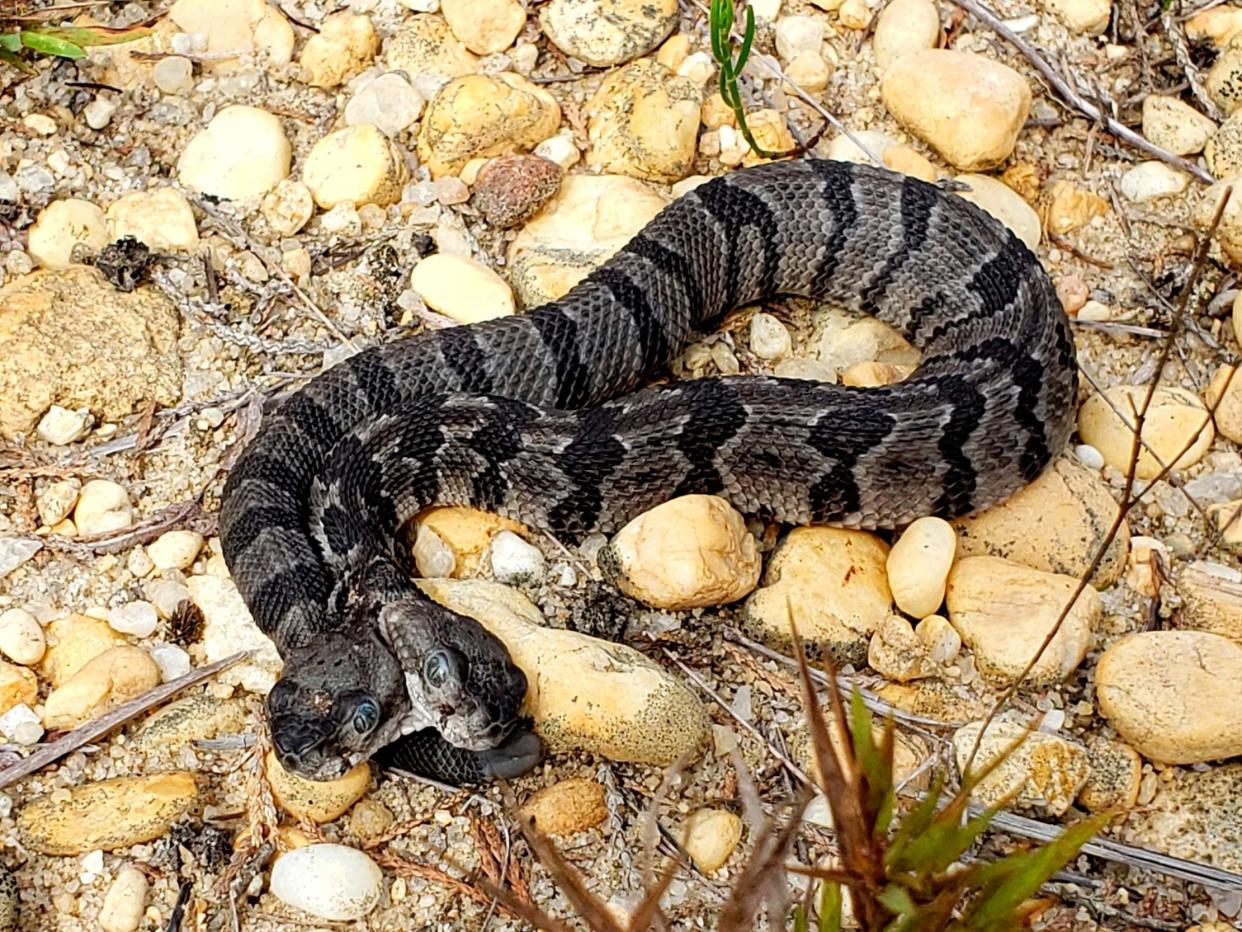Rare two-headed rattlesnake found in US

A rare snake born with two fully-formed heads has been found alive in the US.
The timber rattlesnake was first spotted by reptile experts watching a female snake giving birth in Pine Barrens – a forested area of New Jersey.
The two heads are joined at the body, but are fully independent of each other, so the venomous snake has two flickering tongues, four functioning eyes and twice as many fangs as normal.
However, local expert David Schneider of environmental group Herpetological Associates decided to take the snake into captivity as they said it was unlikely to survive in the wild.
“It appears the head on the right side is the more dominant one, but every once in a while the other head will want to go in a different direction,” Mr Schneider told ABC News.
This could prove problematic for the animal in the wild, he said.
The environmentalists are hoping the two heads don’t make feeding unnecessarily complex.
“We’ll probably try with the dominant head first, and just see if it can swallow the prey normally, then eventually we’re going to want to get it X-rayed just to see what is going on internally – does it have two stomachs?”
“We’ve got to cross our fingers and hope for the best,” he added.
Mr Schneider found the snake with a colleague whose first name was also David, leading them to name the bicephalic serpent “Double Dave”.
Read more
Two-headed sharks are becoming more common, no one knows why
Two-headed calf born in Florida with two mouths that feed separately
Polycephaly is regularly observed in snakes and turtles. One of the main attractions at Geneva’s Natural History Museum in Switzerland is Janus, a two-headed Greek tortoise, which celebrated his 22nd birthday earlier this month.
Timber rattlesnakes are widespread across eastern North America, and their venom can be deadly if untreated. Over 5,000 people are estimated to receive bites from rattlesnakes every year in America, with about five people dying as a result. However, the majority of bites are attributed to diamondback rattlesnakes rather than timber rattlesnakes, which exhibit less aggressive behaviour.
Rattlesnakes are ovoviviparous, meaning they carry eggs inside their body until they hatch, giving birth to live offspring.

